In many countries and cultures of the world, there are ways to paint on the body. Perhaps, this tradition was the oldest in eastern countries. According to their legends, such drawings, mehendi, could bring good luck or joy. To this day, they have preserved the tradition of applying a pattern or drawing to girls before the wedding. The editors of the site "bestx.htgetrid.com/en/" have prepared for you an overview of the best henna for mehendi.
Content
- 1 What is henna for performing mehendi?
- 2 Varieties of material
- 3 The best manufacturers of colored and natural henna
- 4 Composition dispensed in a cone
- 5 Henna in tubes
- 6 Powdered material
- 7 Rules for applying a pattern to the body
- 8 How to make a pasta cone
- 9 Henna for eyebrows
- 10 Material prices
- 11 Rules for choosing henna for bio-tattooing
What is henna for performing mehendi?
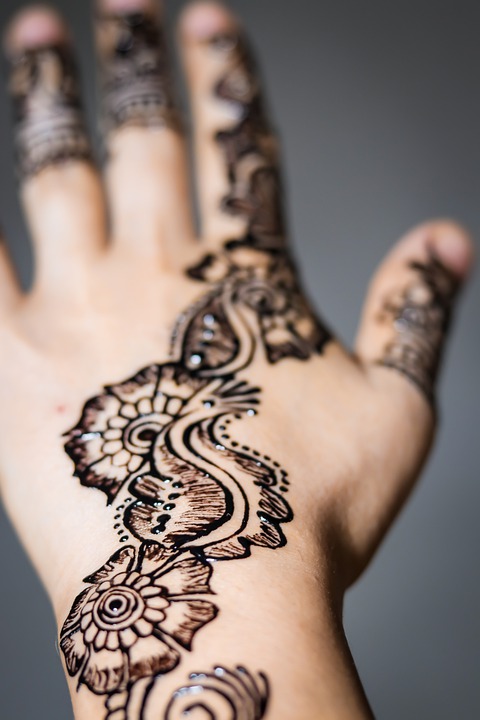
Henna is a leaf from the Lawsonia bush. Which are dried and crushed to obtain a powder. This powder has temporary coloring properties. In addition to drawing, parts of it are used for other types of cosmetic procedures. This substance also has antiseptic properties, so it is quite safe to apply such a composition to the skin. The properties of the leaves of this plant are even beneficial for the skin.
Due to its short-term effect, the pattern itself is erased from the skin, without leaving any traces on it.
Varieties of material
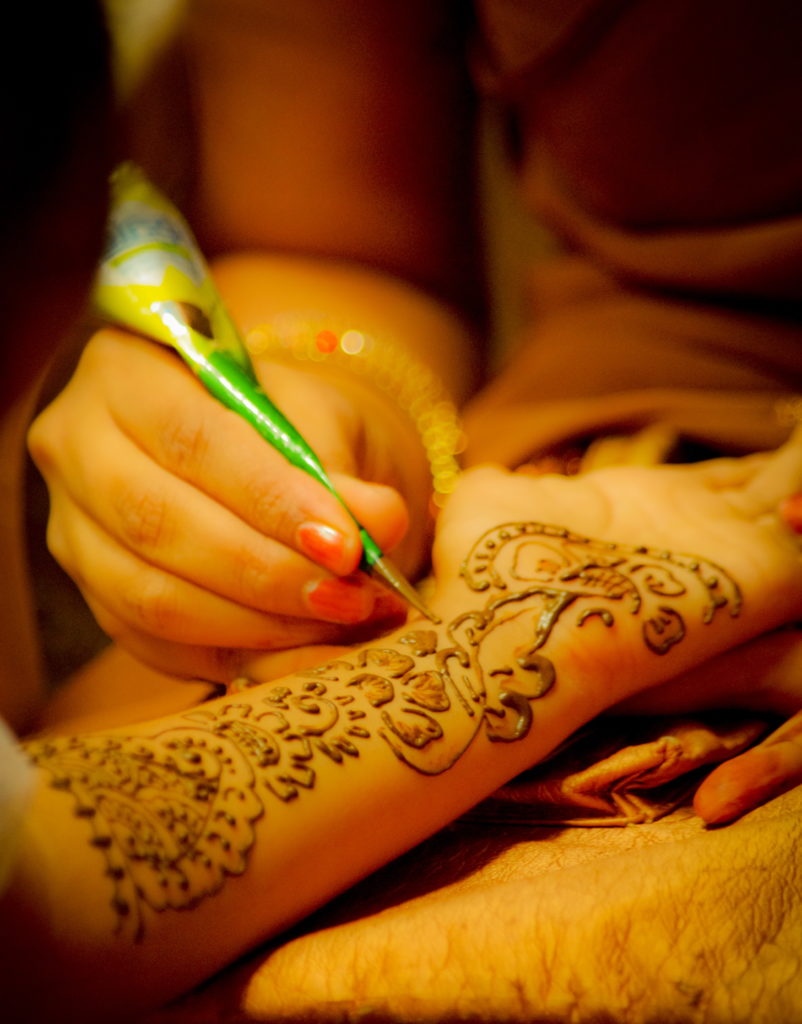
There are several types of material that can be used to create biotattoos. Therefore, it will not be difficult to find a suitable composition for yourself. The natural composition is characterized by a brown tint, but in addition to it, you can find black, white and even multi-colored shades of paste.
On sale you can find different packages of material and a composition of different consistency. There is a composition in the form of a powder, so the tattoo paste will have to be prepared at home. Also in stores you can buy a ready-made composition that has already been created for direct application. As a rule, such a composition is packed in a cone or tube.
Henna white for mehendi
One of the most popular colors for painting on the body of girls is white henna. It looks gentle, does not have a pronounced color in the picture. Since there is no such color of material in nature, it contains chemical components. However, they do not penetrate deeply into the skin. A pattern made from such a paste lasts only a few hours and is easily washed off with water.
If you have allergies or too sensitive skin, then you should stop using this type of henna.
Black paste for mehendi
The black paste contains both natural henna and chemical additives. This material owes its black color to the chemical paraphenylenediamine. Before choosing a drawing of this color, you should know that it is harmful to the skin. When using this pigment, you can get allergies or even burns. In small quantities, such a chemical is not dangerous, but it is better to test it before use.
Multi-colored paste for mehendi
In stock you can find paint in green, blue, red and orange shades.In addition to them, there are glitter paints that create an interesting effect on the body. All these are not natural paints, and they contain chemical components. It is recommended to use such pastes if you do not have a reaction to their chemical constituents.
Natural composition for mehendi
Applying natural henna is a classic method for body beautification. The paste has a rich brown color, sometimes it can turn red. The color on the body depends both on the skin color and on the proportions of the powder in the paste itself. This type of henna is absolutely safe. It does not cause any side effects, it is even good for the skin.
The best manufacturers of colored and natural henna
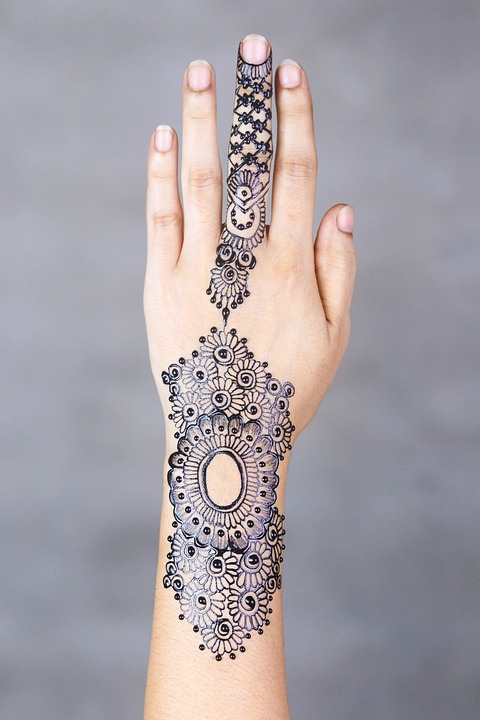
Golecha
A popular manufacturer of colored henna is the Golecha brand. It is an Indian manufacturer. This dye has an acrylic base. Before buying, you should study all the pros and cons. It is sold in cones and has a volume of 20 to 25 grams.
Pros:
- Does not cause allergies;
- Easy to apply patterns.
Minuses:
- Easy to wash off;
- Do not wet with water.
Pranastudio
Another good manufacturer of white makeup for tattooing is the Pranastudio brand.
Pros:
- Good price;
- Saturatedly applied to the body;
- Can be purchased anywhere.
Minuses:
- Too runny
- May spread when tattooed.
The best manufacturers of black bio-tattoo paste are Golecha and Neha.
Golecha
Black henna is allergenic, so it is worth making a test before applying.
The advantages of the Golecha brand are:
- Convenient packaging;
- The weight of the cone is 25 grams, which is enough for one tattoo;
- Long time to save the drawing.
Minuses:
- Fluid texture;
- Allergenic.
Neha henna black
Neha Body Paint is light enough to apply.
Advantages:
- Saturated tone;
- Dense consistency.
Minuses:
- Allergenic.
GlitterTattoo
The paste for applying a painless glitter body tattoo is produced by the GlitterTattoo brand. This paste will be an excellent alternative to colored henna.
Advantages:
- Huge selection of colors;
- Easy application.
Disadvantages:
- High price;
- Easily washed off with water.
The best natural henna producers are Neha and Kaveri.
Neha henna natural
Paste from the Neha brand is quite popular due to the fact that it is absolutely safe and has a pleasant color. The composition is absolutely natural, it includes:
- Lavsonia Leaf Powder;
- Citric acid;
- Essential oils;
- Sugar.
Advantages:
- Low cost;
- No added chemicals.
Disadvantages:
- Not identified.
Kaveri
Kaveri brand powder also consists of natural ingredients.
Advantages:
- Stays on the body for a long time;
- It has a pleasant scent.
Disadvantages:
- The paste is not homogeneous.
Composition dispensed in a cone
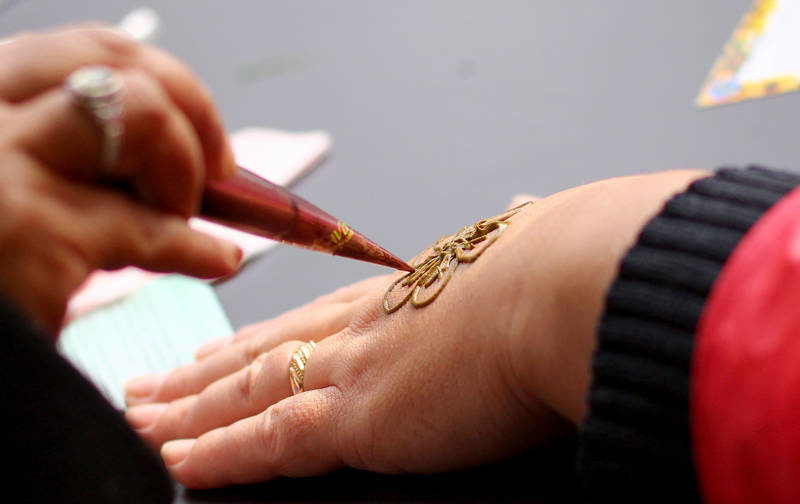
This type of packaging is the most convenient way to get a tattoo on the body. Thanks to such a container, the process of painting the body is simplified, and the paint is consumed sparingly.
If you are a beginner painting master, then this form will be the best option for you. In such a container, the composition is stored from 2 to 6 months. However, for such a long shelf life, preservatives are added to the natural product, which is a disadvantage.
Henna in tubes
The use of such a composition is very practical, due to the fact that it can be stored for a long period of time. This property is due to the fact that the packaging is sufficiently airtight, which prevents the paste from deteriorating. Even a novice master who first picked up a tube can make a tattoo on the body with such paint. In such a container, the consistency of the material is watery, but the pattern comes out bright and saturated. This dye is easy to apply to the skin and dries quickly.However, a test should be performed before using on sensitive skin. Since such pastes can cause an allergic reaction.
Powdered material
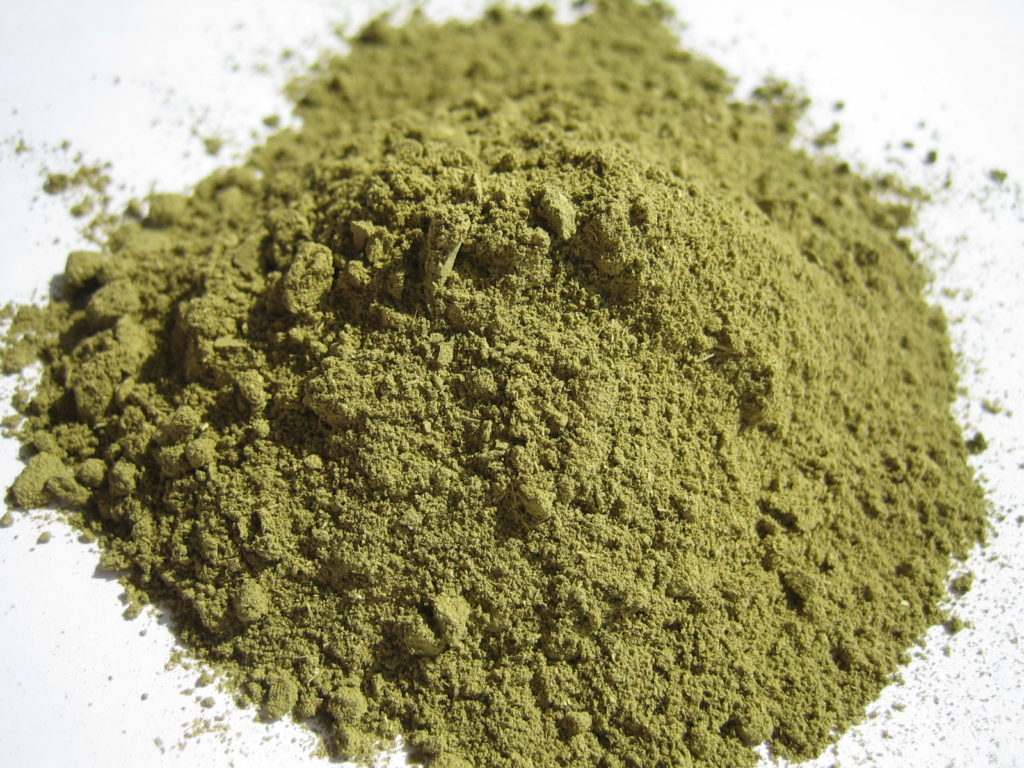
The peculiarity of such a paste is that it must be prepared by yourself. For this reason, it is the highest quality and most reliable type of material for tattooing. There are a number of benefits to creating such a mixture at home. For example, you can add any essential oils, as well as make it in any shade.
Such henna has no side effects due to the fact that it consists of natural ingredients. The pattern applied to the body is preserved for a long time. The drawing can last from 2 weeks to 1 month. Basically, the release of such a powder is the Neha brand.
Rules for applying a pattern to the body
In order for the tattoo to be bright, to last a long amount of time, and also not to have a negative effect on the skin, it is necessary to properly prepare and apply the composition to the body.
Rules for preparing the composition at home
It is recommended to prepare the paste a day before applying it to the body. This is done so that the henna gives the desired color.
For cooking, you will need the following components:
- Ceramic or glassware;
- Food film;
- Wooden or plastic spoon;
- Sieve with fine holes.
It is not recommended to use metal devices, since the material tends to oxidize, which does not lead to the result you expect.
Ingredients:
- Henna bag;
- Lemon, or lemon juice;
- Sugar;
- Essential oils (optional).
Pasta preparation process:
- First, the powder is sieved through a sieve in order to get rid of large flakes or lumps. This is done to prevent large particles from getting stuck in the cone later.
- Take 3 tablespoons of sifted powder and mix with 7-8 tablespoons of lemon juice. Lemon juice is used to oxidize the powder. Since the more the component is oxidized, the brighter and richer the color will be. The juice should be added gradually to create the desired consistency. The paste should be thick and smooth.
- 1 tablespoon of sugar is added. Sugar gives the solution a caramelizing property. This is to prevent the paste from hardening immediately on the skin. After all, the longer the hardening process takes place, the longer the effect of henna on the skin. The brightness and durability of the applied pattern directly depends on this. Also, the addition of sugar prevents the solution from spreading over the body.
- At the very end, essential oils are added to the resulting mixture. About 15-20 drops. The composition is mixed. It is also useful to add essential oil to moisturize the skin, since henna, together with lemon juice, significantly dry the dermis.
After preparing the mixture, a cling film is placed on the dishes. It is recommended to do this tightly to prevent air from entering. The dishes are placed in a dark place for about 12 hours.
In the morning, it is recommended to take out the mixture and add another 1 spoonful of sugar and check the resulting consistency. To understand that the paste is ready for the application procedure, it must be like sour cream in consistency. If the composition is too thick, you need to add more lemon juice. If, on the contrary, it is too fluid and liquid, you should add more powder and place in a dark place for 2-3 hours.
Rules for preparing the skin for applying a bio-tattoo
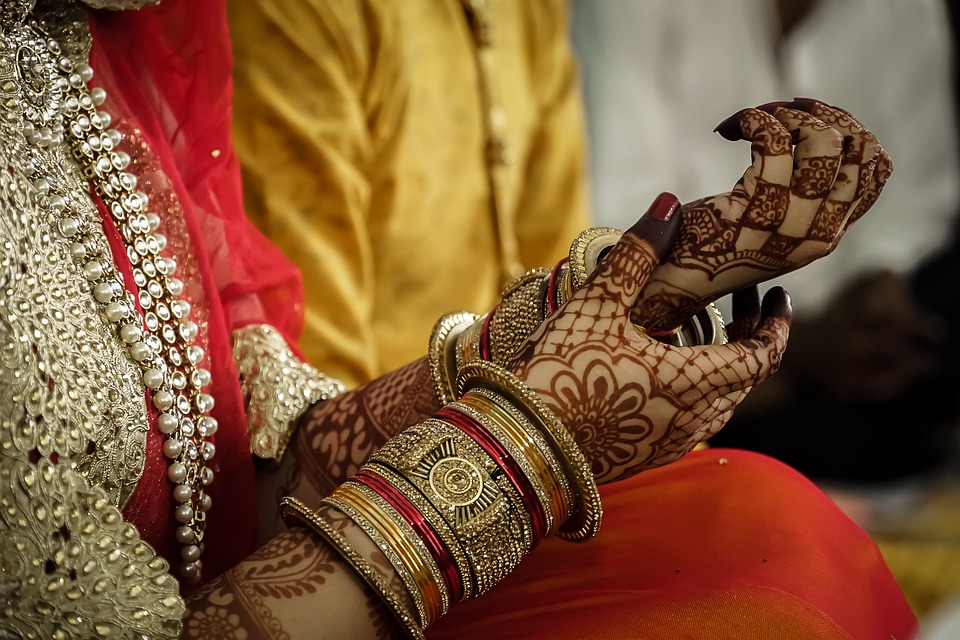
The skin must be prepared for patterning. Performing this procedure will allow henna to better adhere to the skin, and the effect of the pattern will be more durable.
First you need:
- Degrease and cleanse the skin with a scrub or peeling;
- If the place where you are going to apply the pattern is covered with hair, you should get rid of them;
- Immediately before application, the skin must be washed with soap and wiped with an alcohol-containing solution.
Performing such simple procedures will bring the positive effects of a temporary tattoo.
Henna application rules:
- In the event that you are a beginner in this business, and are not sure that you can accurately apply a pattern to the body, you should sketch with a cosmetic pencil. After that, you can safely circle it with paste.
- The thickness of the lines should not exceed 2-3 mm. Because if the line is too thin, the drawing will not have sufficient brightness.
- To fix the pattern on the skin, rub it with eucalyptus oil. But this should be done after the composition has dried.
If you are using a commercially available compound, it should be checked for quality before use. This is quite easy to accomplish. A quality manufacturer, after diluting the paint with water, will not have lumps.
If you make a mistake in applying the pattern, the unnecessary part can be easily erased using hydrogen peroxide for this.
How to make a pasta cone
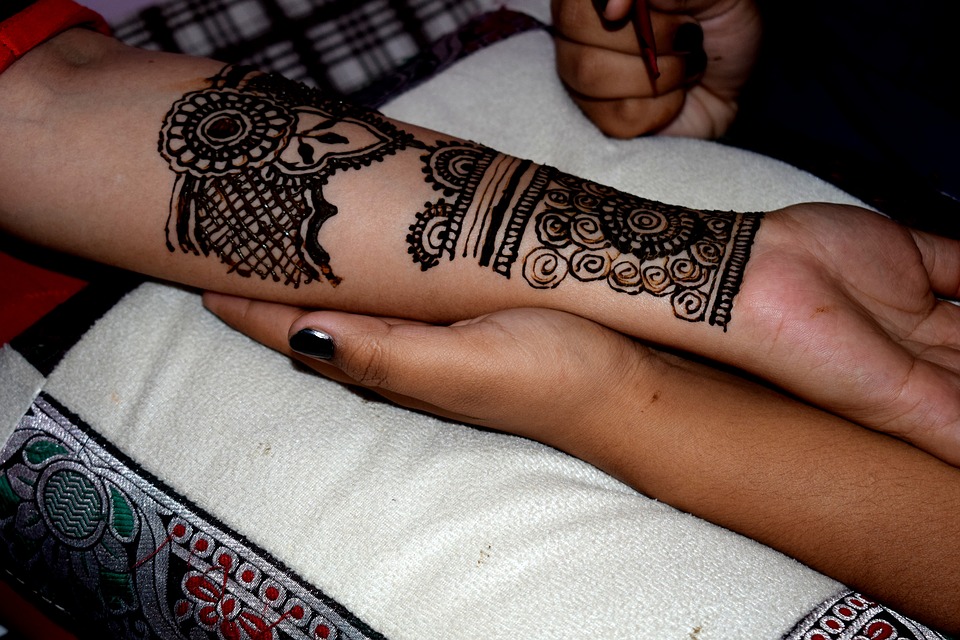
The cone is the most convenient way to apply henna to the skin. In order to make it yourself you will need:
- Transparent tape;
- Scissors;
- The material of which the cone will be composed.
The raw material of the cone can be either wrapping paper or foil. The advantages of wrapping paper are that it bends easily and the hand does not get tired when using such a cone.
Process of creation:
- A square with sides of 10x10 cm is cut from the material (of your choice). You can choose a larger size. It all depends on the size of the pattern.
- After that, we begin to twist the cone. This is a fairly simple process. The tip is taken and brought to the center of the square, then twisting begins.
- When the cone is ready, it must be fixed with tape.
- After you have a cone, you need to fill it with henna. To do this, paste is added to the remaining hole and pushed to the tip of the cone. The composition should fill the entire space tightly.
- Then you need to close the hole. To do this, the remaining piece of the sheet is folded so that there are no holes and is fixed with tape. For fidelity, you can wrap all the material with tape.
Henna for eyebrows
In addition to drawings on the body, henna is used to dye eyebrows. It is a painless tattoo replacement. The composition stains not only the hairs, but also the skin, which prolongs the coloring effect. Such staining can be done both in the salon and at home.
Henna for coloring eyebrows is diluted with water and then applied to the prepared skin. The composition is left for 10-15 minutes, depending on the desired effect.
Material prices
You can meet professional henna for applying mehendi in salons that sell oriental cosmetics, and in online stores. Some craftsmen may also sell professional design material. Henna prices vary by region.
The average price for Golecha henna is 120 rubles. And the composition from the Kaveri brand can be purchased for 75 rubles. The most expensive will be pasta from Pranastudio, it will cost about 200 rubles. This applies to the prices of ordinary henna. But the mixture with sparkles will cost much higher. The average price is 800 rubles.
Rules for choosing henna for bio-tattooing
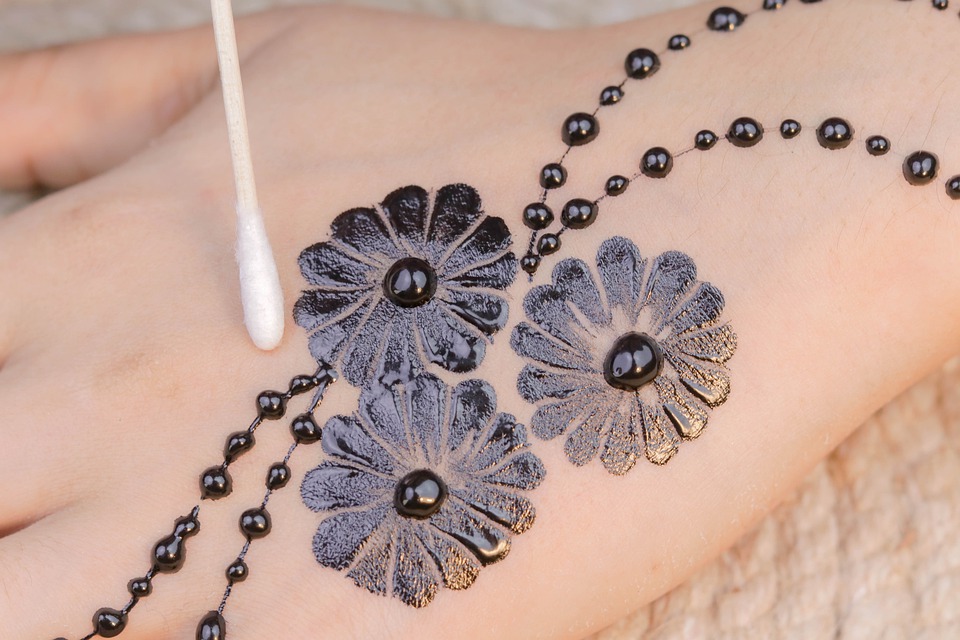 Due to the large number of brands that sell a product, you need to know how to choose a quality one in order not to regret your choice.
Due to the large number of brands that sell a product, you need to know how to choose a quality one in order not to regret your choice.
The first thing to look out for is the sensitivity of the skin and its tendency to allergies. If you have any problems, then it is better to use only natural henna, which will not cause irritation and allergic reactions. In the event that you are lucky, you can safely experiment with different colored henna types.
If you are a professional or draw well, it is recommended that you buy henna powder and cook it yourself. For novice craftsmen, it is recommended to purchase a finished product, so there will be fewer problems with applying the composition. The best option would be to buy a cone or tube.
Mehendi is an opportunity to experiment, decorating the body with various patterns, and good henna will allow you to immerse yourself in creativity without fear of negative reactions on the skin.












